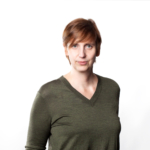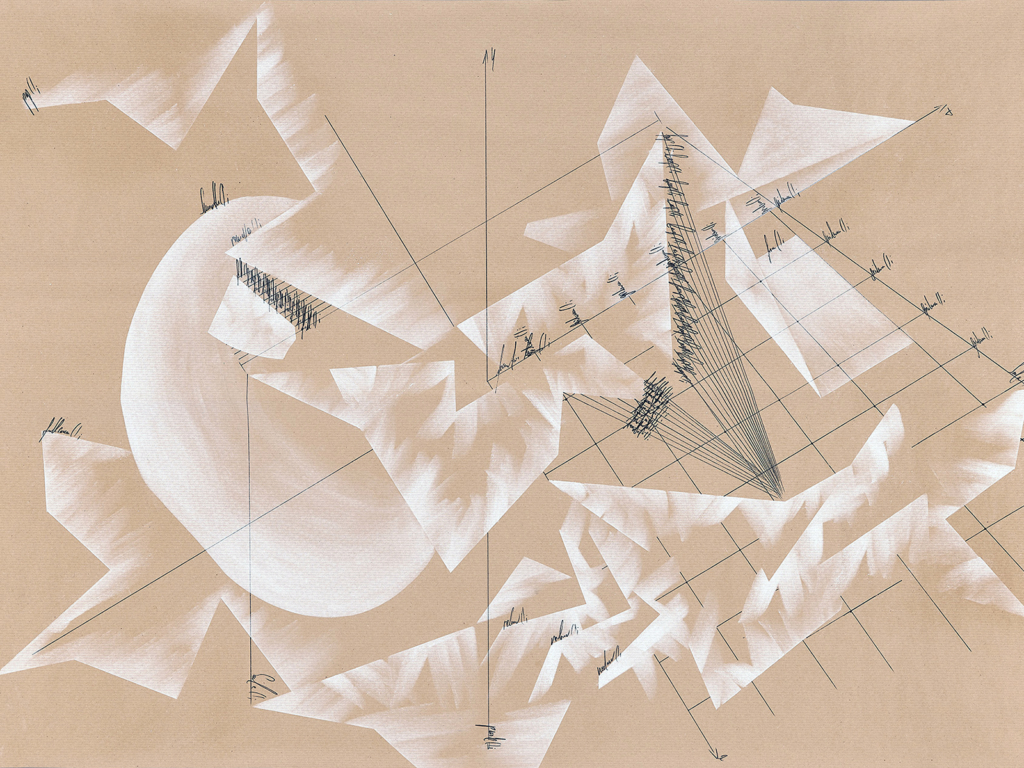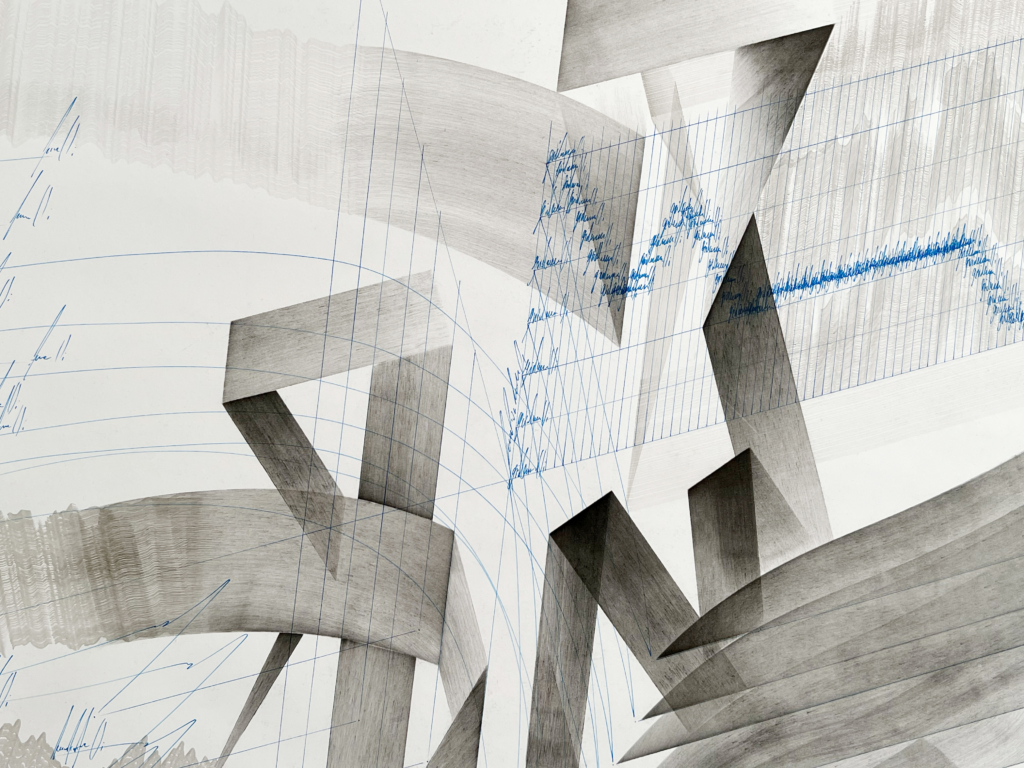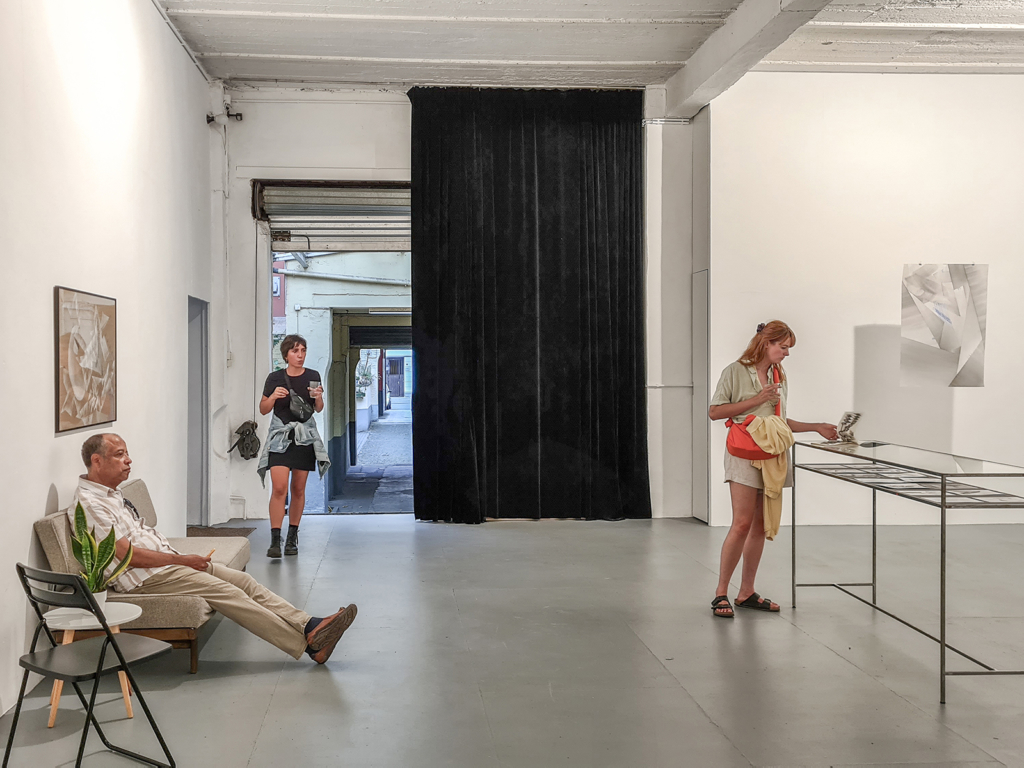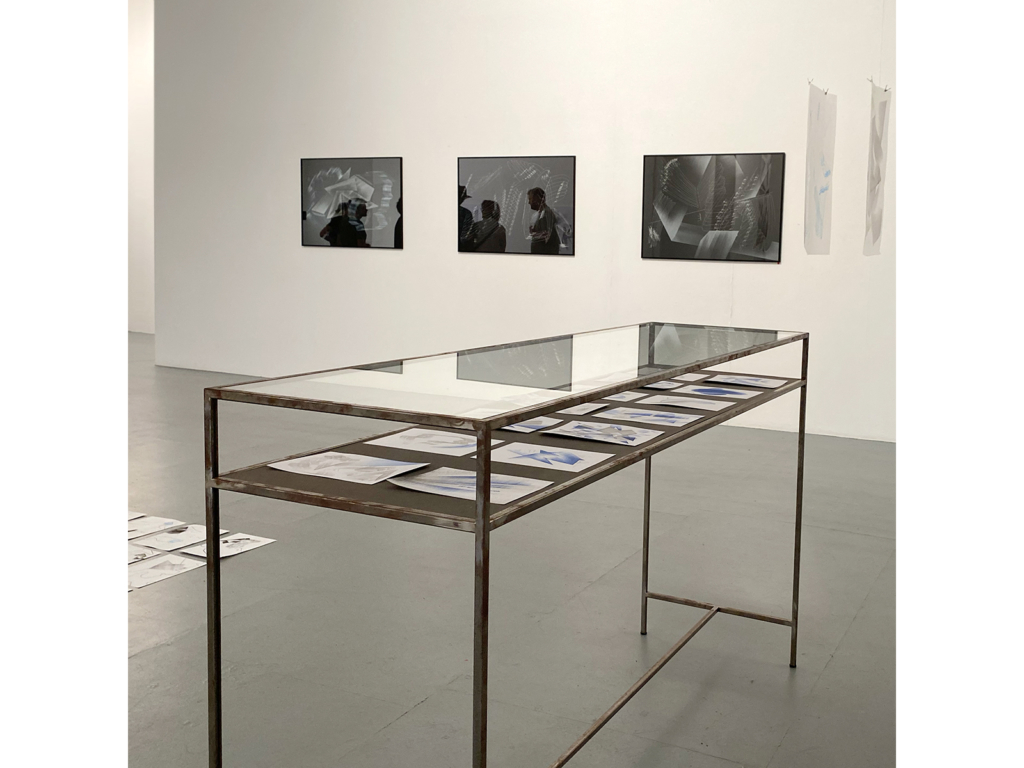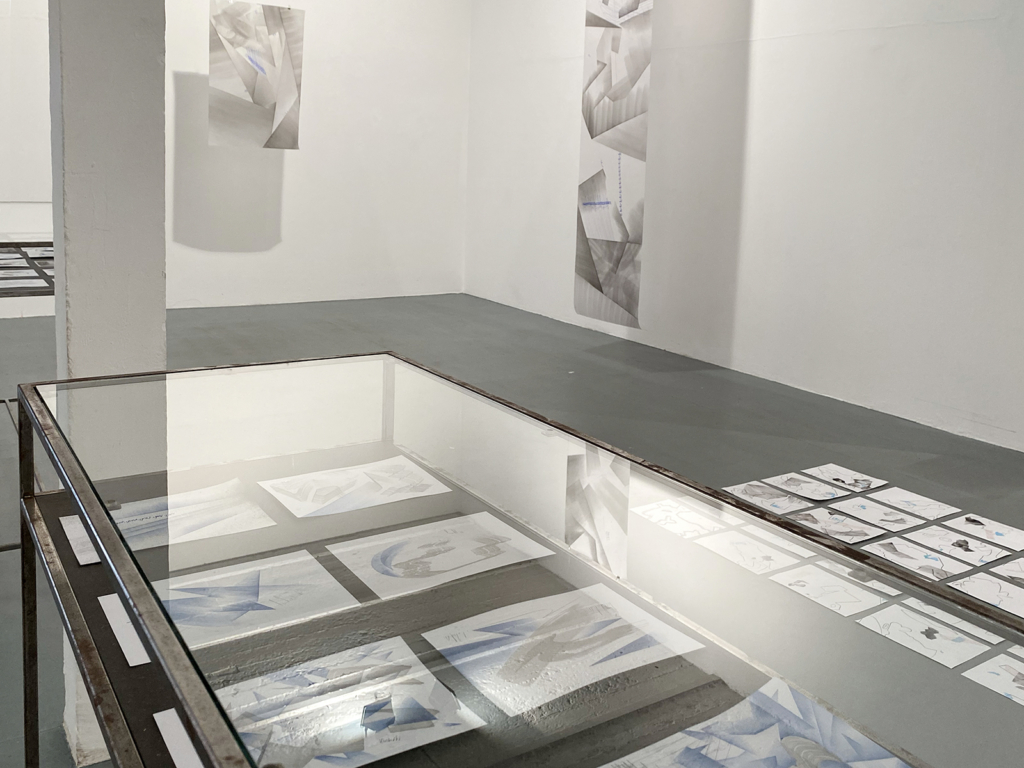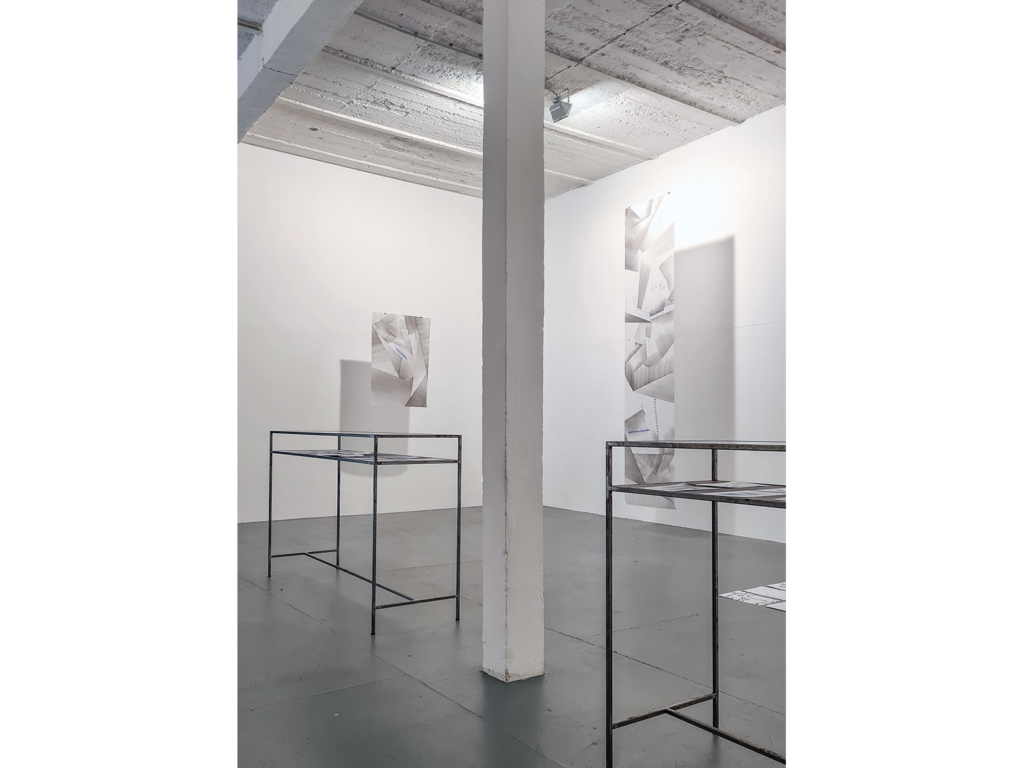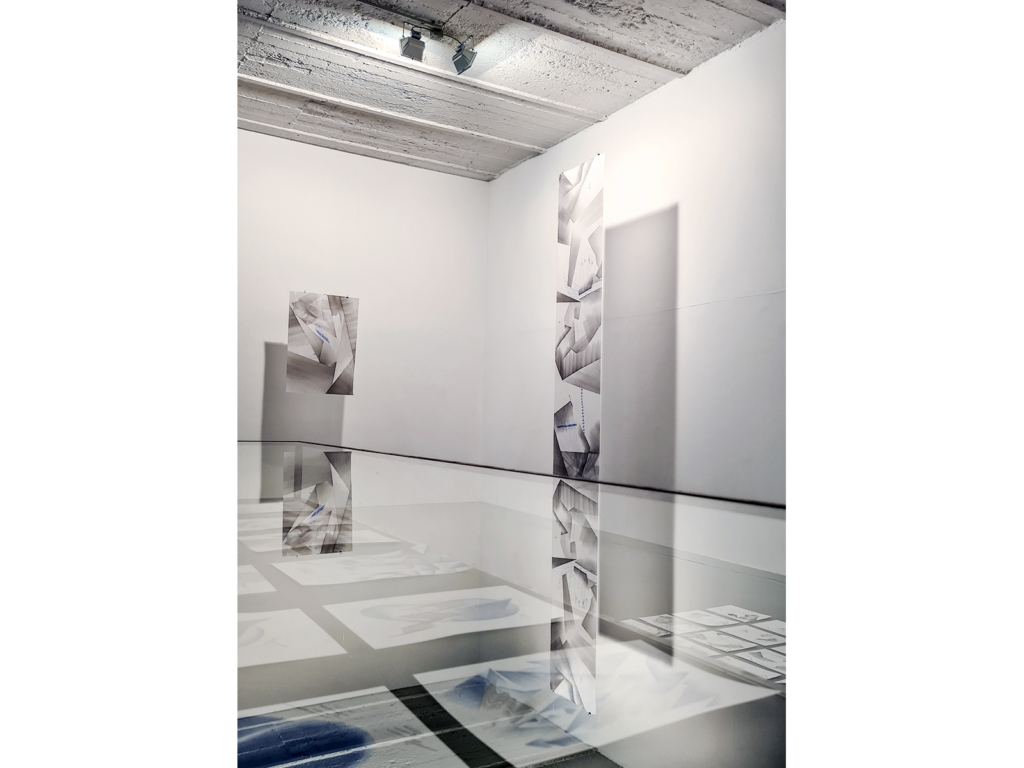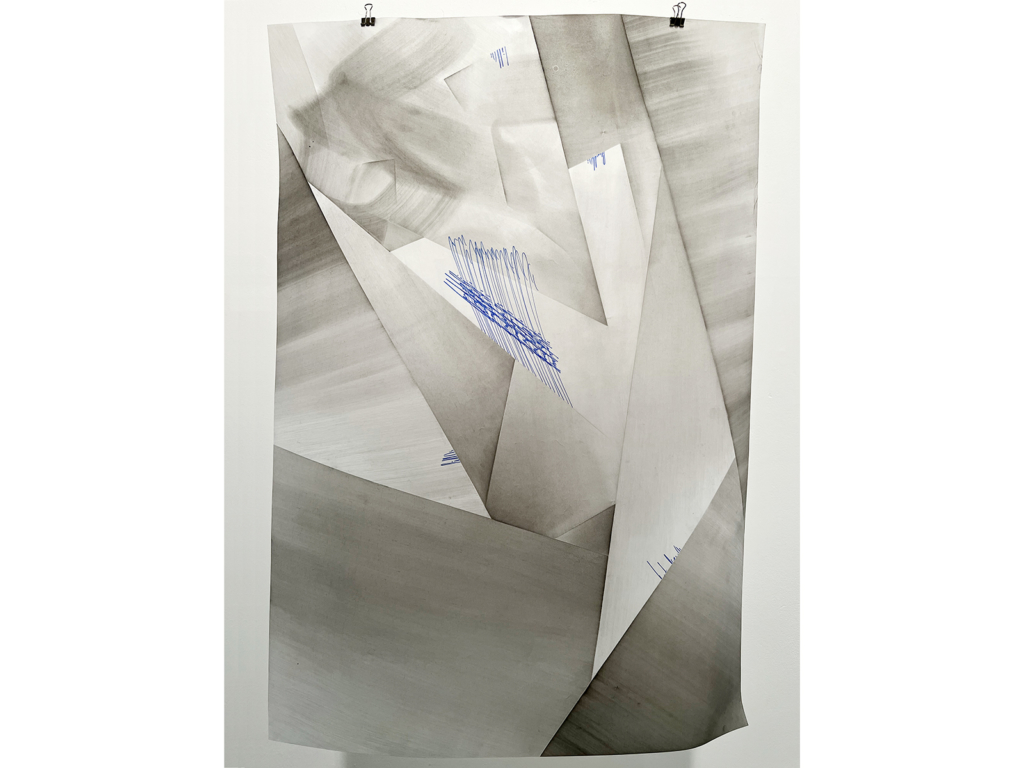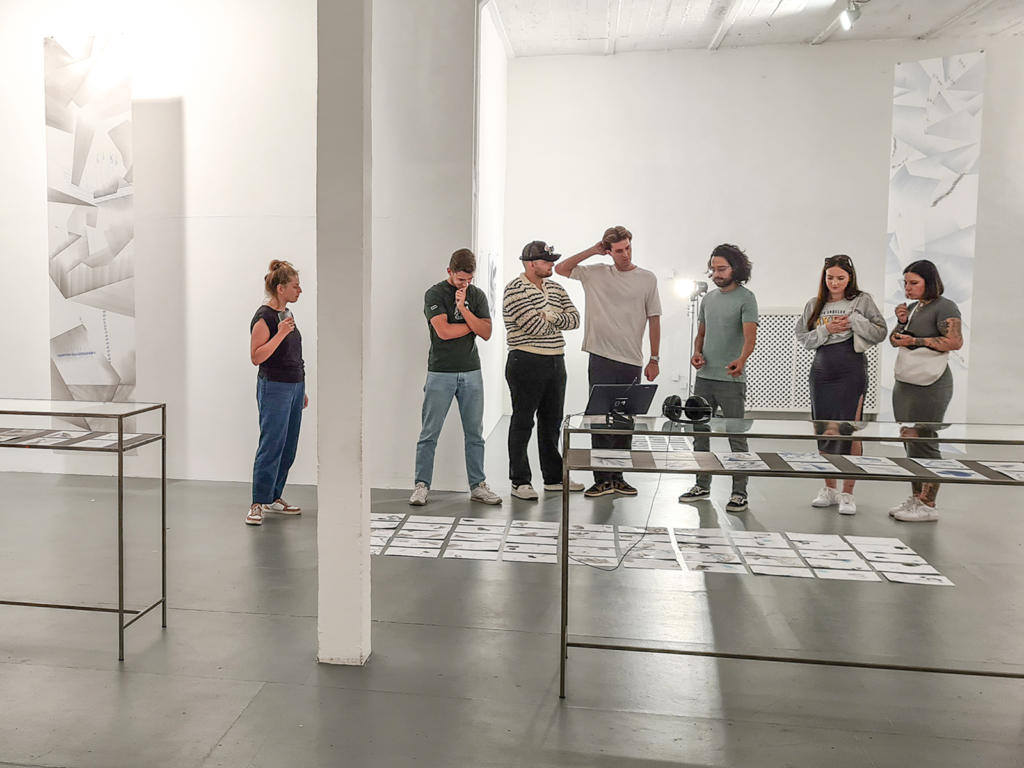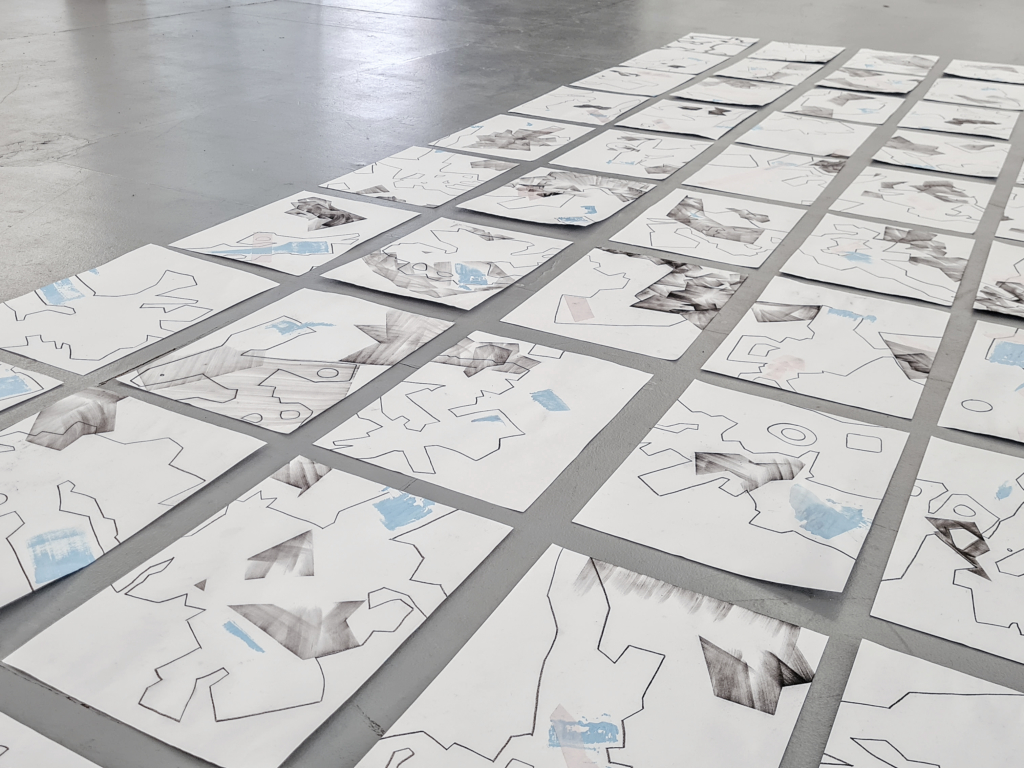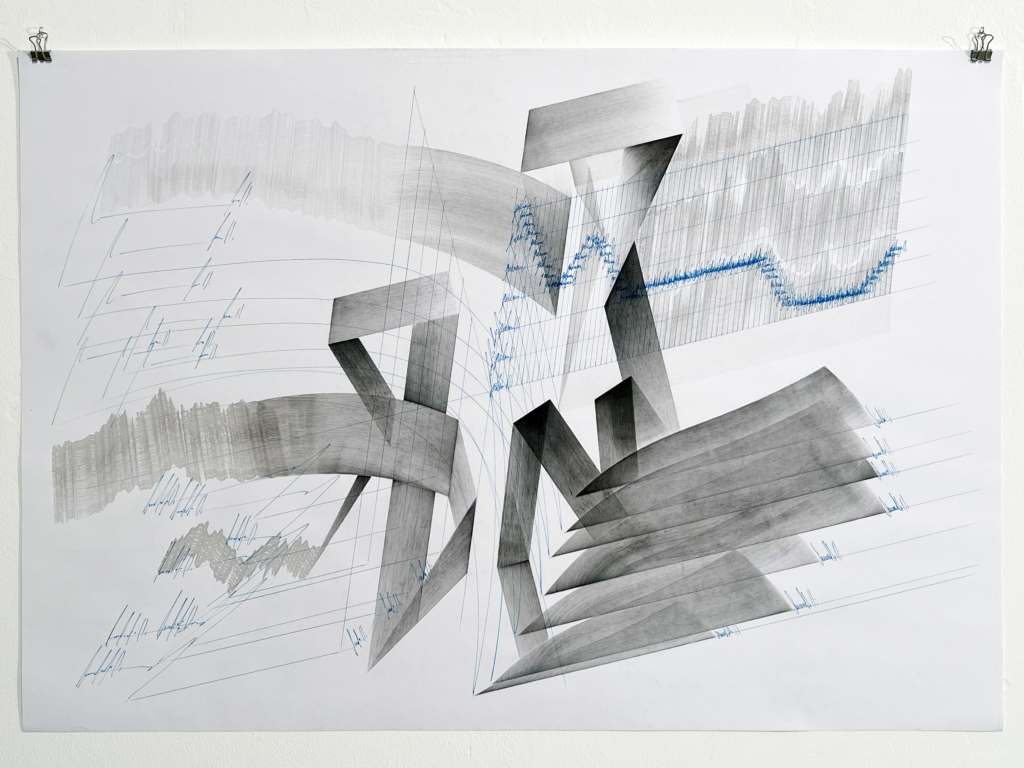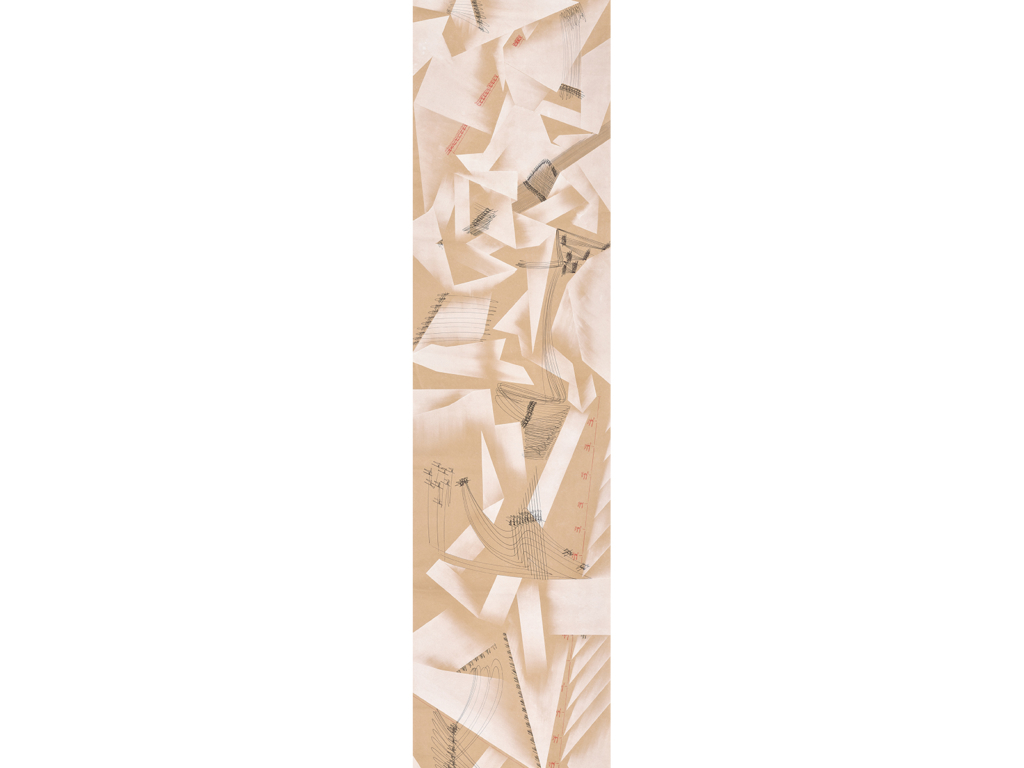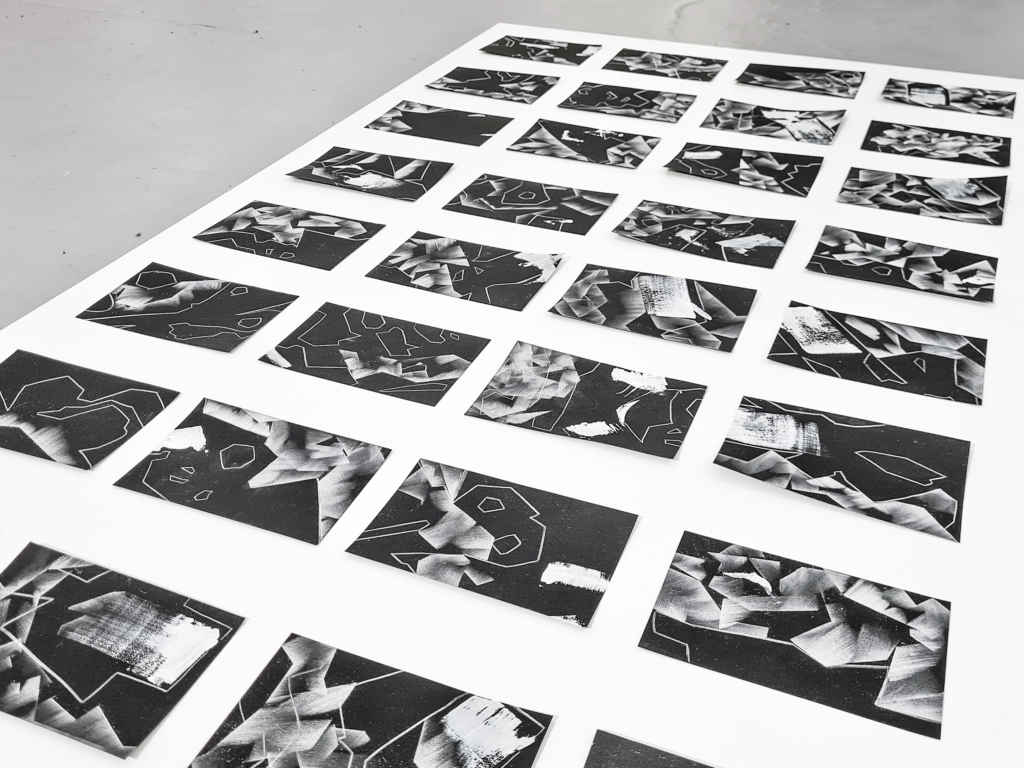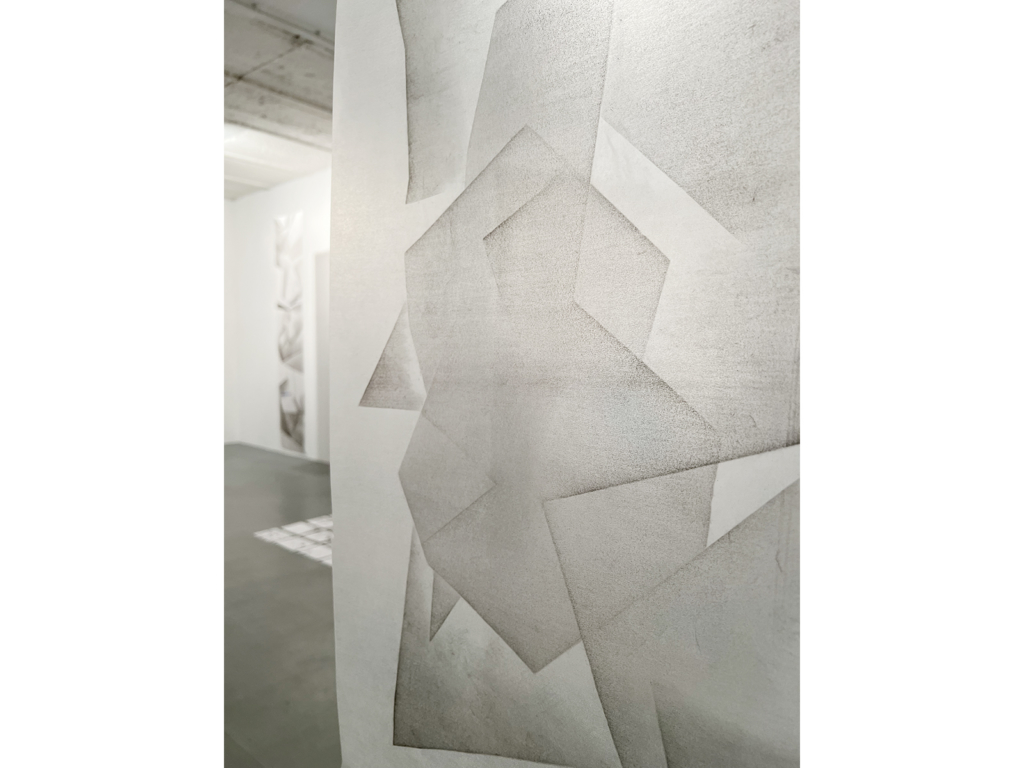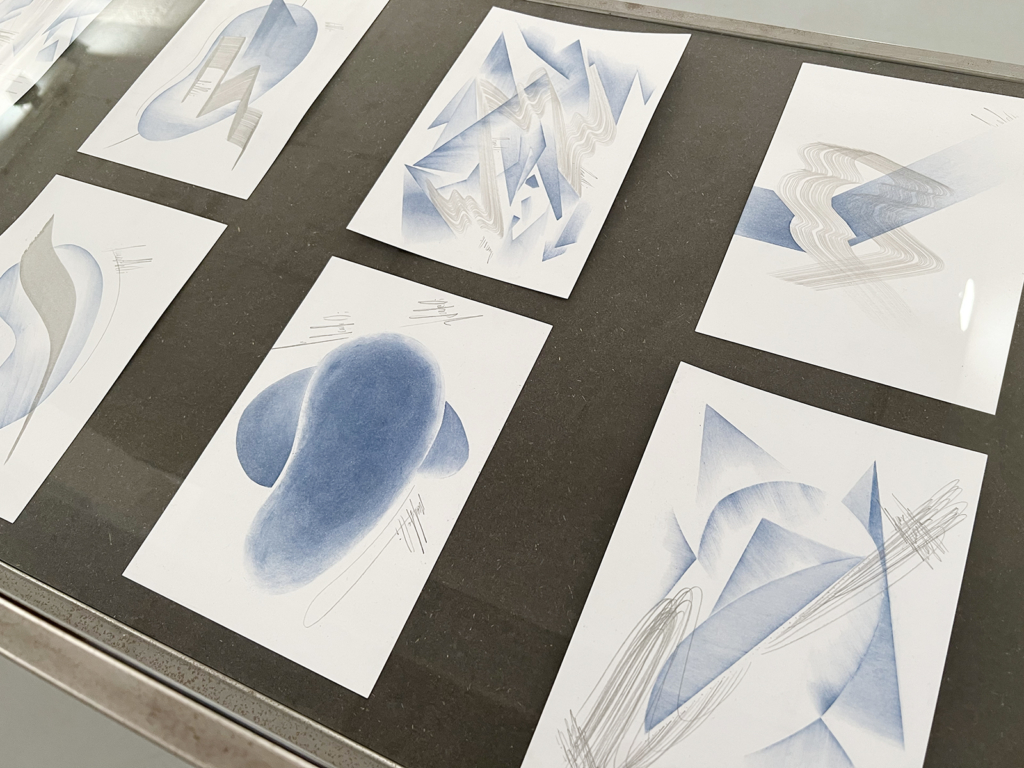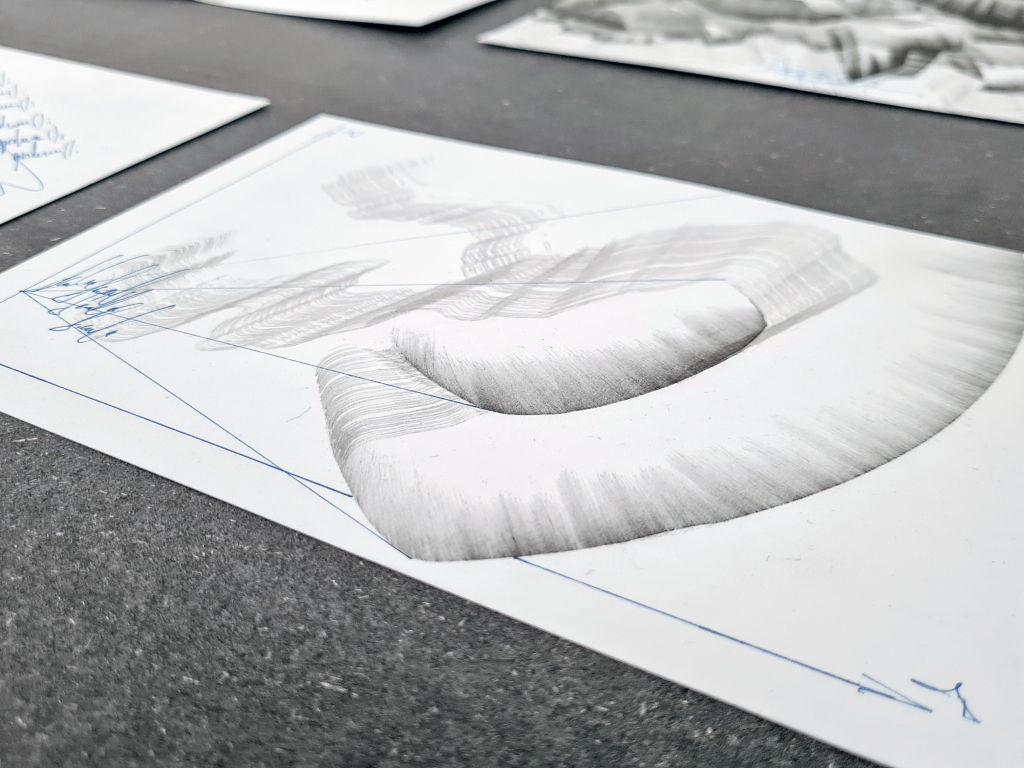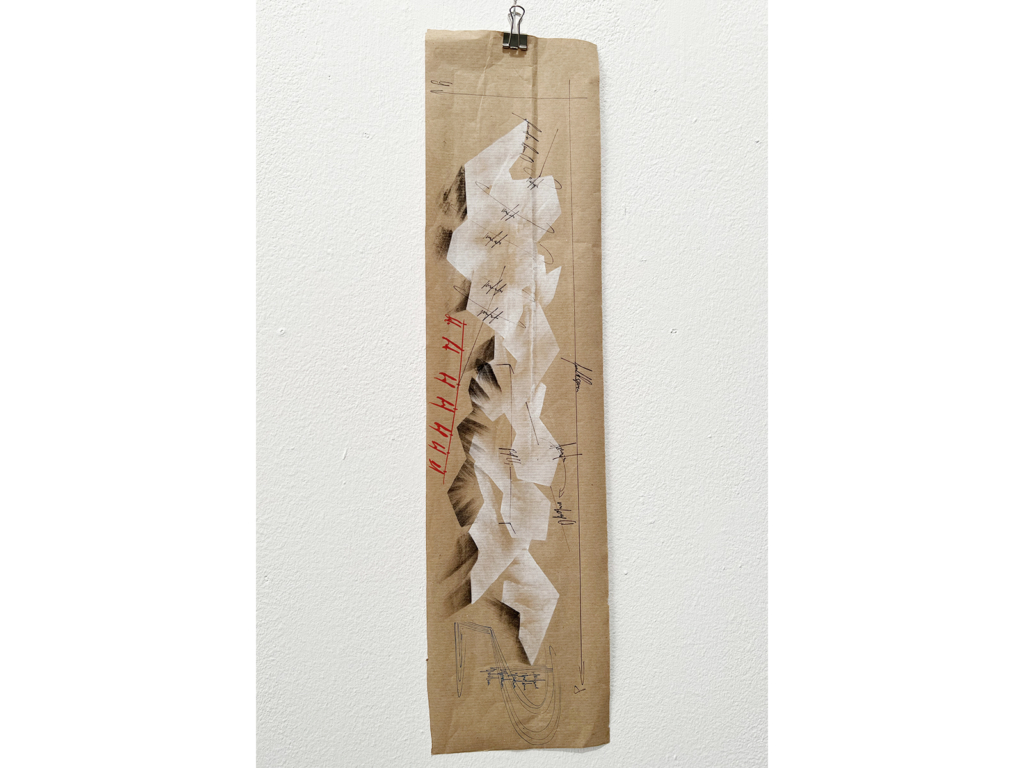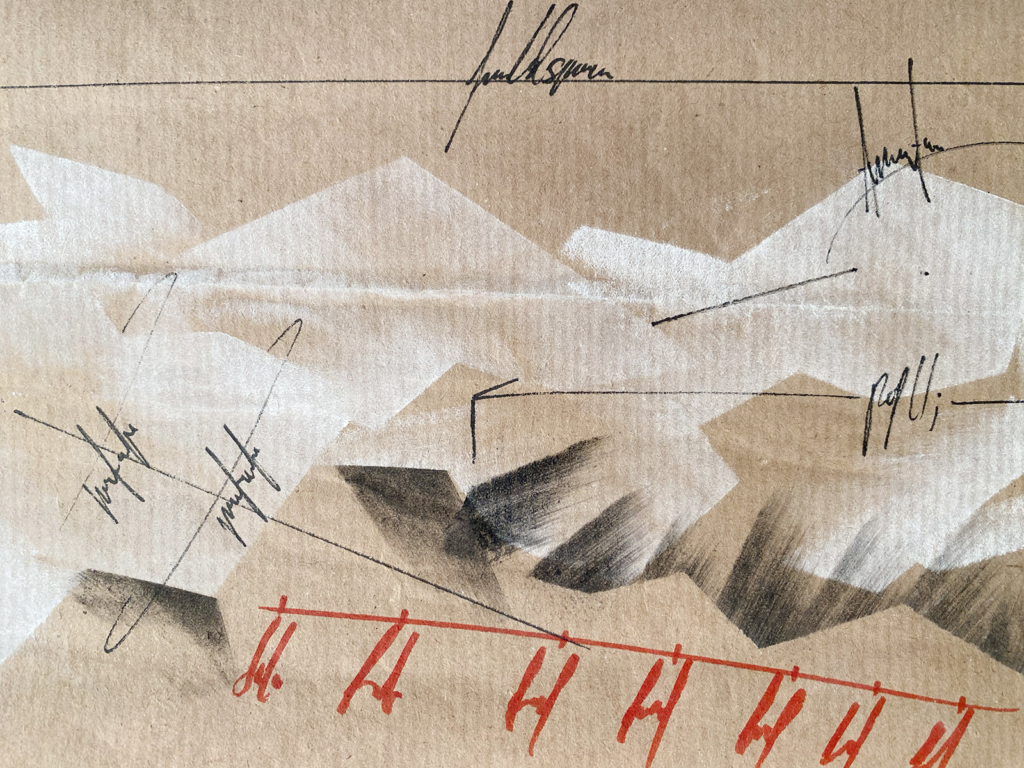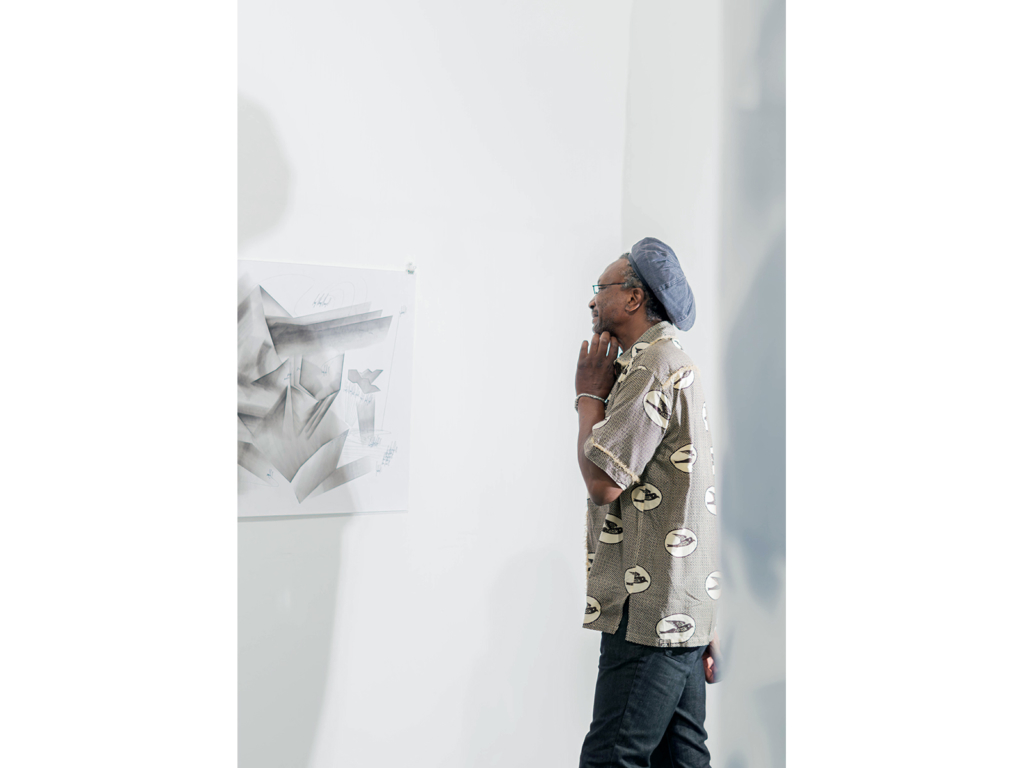Darío Morazán is one of those designers who rethink material-physical design processes from the perspective of the digital. At studio 40 in Cologne, his latest drawings can be seen – dynamic systems of lines as programs and processes.
Drawing is an artistic activity with a long tradition that underwent a fundamental change in the 20th century with the advent of new imaging and reproduction techniques. One of the technical changes was that, from the second half of the 20th century, drawings could be produced with the aid of a computer. Beginning with Conceptual Art in the 1960s, artists no longer drew by hand, but wrote a concept, translated it into an algorithm using a programming language, and executed it in drawings using a computer-controlled drawing device, such as a plotter. The drawing forms are no longer designed directly, but the conditions and rules according to which the forms are created are determined. Through mostly verbal instructions, a chain of events is set in motion that is independent of the drawers.
From this perspective, drawing is less a medium for recording than a medium for instructing processes, movements, and sequences. It is an algorithm consisting of a sequence of rules that precisely describe and control the drawing process. Characteristic of this drawing process is that little influence is exerted on the ongoing process of generation. Instead, the activity and creativity of the drawers go into the invention and description of the process-controlling factors and the form-determining functions, as well as into the choice of boundary conditions such as the type of drawing surface and the drawing instrument. Finally, the selection, variation, grouping or combination of the forms and structures obtained in the process are left to the intention and subjectivity of the drawers.
Working in series, in which each drawing is derived from the previous one in a continuous progression, becomes the basic principle. Variations are played out systematically. They arise through the different determination of variables or through the inclusion of chance operations. In this way, the content and form of a design are not determined in advance and merely illustrated by drawings. Rather, designs emerge successively through rules of action and repeated, rule-controlled overwriting.
Darío Morazán follows this generative process with his drawing works, which he presented in the laboratory exhibition »function draw ()« at studio 40 in Cologne in July 2023. »function draw ()« introduces programmed drawing as a fundamental design method for the systematic and complex design of processes and artifacts. Darío illuminates the notion of program from a material-physical drawing practice and relates it to the digital-technical processes through which drawings are created by means of code. In doing so, he explores how cultures of the digital have influenced body-based drawing practices and, conversely, how much digitality is already contained in analog drawings. The spectrum of works on display ranges from drawings that transform spatial processes into two-dimensional forms and textures, to series of drawings that result from a strictly regimented working method, to large formats that are the result of a structured body movement. The dynamic systems of lines are joined by writing and signs that combine the visible with the legible, without the meaning of the graphic formations being immediately apparent.
Behind each drawing are complex working algorithms that vary from one execution to the next, even with the same input. The »Crime Scenes« series, for example, is based on dropping various objects such as brushes, clamps, and string onto a piece of drawing paper. As if reconstructing a crime scene, the randomly arranged objects are outlined on the paper. Each step of the drawing process follows a defined rule. For example, the contour lines are used to create templates, which are then used to add further line formations to the drawing in a specific order. In another experiment, which took place in a group, Darío investigated how hand-drawn and digital artists react to the same drawing instruction, what types of drawings are created within a given short period of time, and what differences and similarities they have. In addition to the drawings, the exhibition also features short documentary films that help visitors understand the complex process of drawing.
The exhibition »function draw ()« by Darío Morazán was created in the Department of Design Theory and Research at the Köln International School of Design of TH Köln. It is the result of Darío’s work in the workshop »Learning by Drawing« under the direction of Dr. Meike Eckstein (Zurich University of the Arts) and his intermediate project based on it, supervised by Prof. Dr. Carolin Höfler. The workshop was part of the cooperation project »Open Universities« of the TH Köln and the University of Cologne, funded by the RheinEnergie Foundation in the context of the priority program »Society and Digital Transformation«.
Drawings & Videos: Darío Morazán
Curators: Byron Co, Sarah Linßen
Structure: Sarah Linßen, Byron Co, Tomy Badurina
Group experiment: Rina Cellarius, Alpar Gür, David Keitel, Maura Steinbach
Photos: Byron Co, Carolin Höfler, Darío Morazán, Matthias Karch, Sarah Linßen, David Steckelbach

